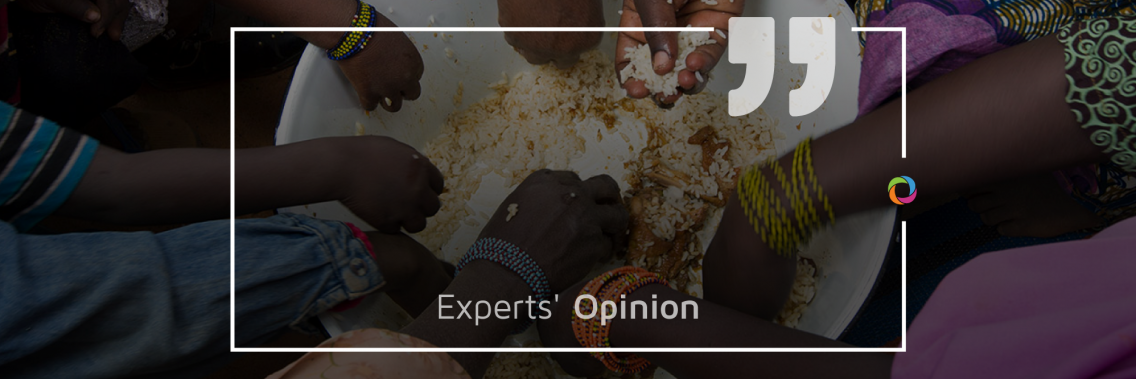According to the UN, the current world population of 7.6 billion is expected to reach 9.8 billion in 2050, of which roughly 8 billion will be in developing countries. To feed that population, there needs to be several changes in crop production. However, with these striking statistics, more and more people wonder if there is enough food for the future to feed everyone.
Will there be enough food by then to feed everyone?

“According to the FAO, around one-third of food destined for human consumption is either lost along the supply chain or is wasted. Furthermore, the pattern of food loss is profoundly different in developing and developed nations. In developed economies, losses along the supply chain are minimal; however, strict grading criteria and supermarket standards mean there is a high level of rejection of outgrades which has been estimated to be between 20% and 40% of food produced. Although some outgrades do re-enter the human market, most are destined for animal feed or are processed for nutrient and energy recovery. Further losses are incurred through high levels of food waste by consumers whether at home or through food service outlets. In developing economies, where environments can be more challenging for safe food preservation and where supply chain technologies are often less developed, almost half of what is grown is lost before getting to safe storage. If we were able to halve food losses in the developing world and halve food waste in developed economies then around 25% more food would be available. As the global population is destined to increase by 20%, then there should be enough food produced globally to feed all.”

“The Green Revolution, afoot since the mid-1960s, has ensured the availability of sufficient food for the mounting global population until now. The Green Revolution emanated largely from the development of high-yielding varieties (HYV) of staple cereals and compatible farming practices. Rigorous efforts by agricultural scientists under the banner of the International Rice Research Institute and the International Maize and Wheat Improvement Center have brought about an astronomical increase in rice, wheat, and maize yields over time. Some HYV varieties of these crops have the potential to quadruple yields from that of local varieties when cultivated under a well-controlled cultivation regime. Additional efforts by other pertinent research organizations under the umbrella of the Consultative Group on International Agricultural Research have helped boost the production of vegetables and horticultural crops as well as fish and livestock. Add to this the innovation and expansion of the hybrid food grain production technology with the potential of effecting revolutionary increases in food grain yields. With these ongoing efforts to further improve food crop production technology in full swing, I feel reassured about the global community’s ability to produce sufficient food to feed the projected 9.2 billion world population in 2050. The toil should, however, persist without respite.”

“When analyzing the whole spectrum of food security, production isn’t the main bottleneck. Though we are facing the depletion of arable land, the exhaustive use of potable water, and climate change effects, the proper application of technology, innovation, and a careful look into traditional methods can bring a steady production of calories and nutrients above the world population’s growth rate. However, famine has increased in several parts of the world – namely Latin America, sub-Saharan Africa, and the Middle East – mostly due to the barriers to the accessibility of food: poverty, land displacement, and conflicts. Therefore, the challenge is to tackle the multiple causes of hunger through a holistic perspective and guarantee access to and stability of nutritious food to everyone.”

“If the world continues with business as usual there is no way that there will be enough food for 9.2 million people. Added to this is that we have seen how increasing attempts to create more food have added pressures to our food systems, threatening the planetary boundaries.”
What strategies should be adopted by international organisations in charge of feeding the world in 2050?

“First of all, the solution is not to just move everyone to the developed economy model grounded in a global commodity food system. In developed economies, the challenge is to move the industry and consumers away from the false premise of narrow quality criteria on the one hand and to balance nutritional needs and portion controls. This needs continued efforts to educate consumers into safer and more sustainable eating habits. In developing economies, the goal of food producers should be to realize value markets closer to home and not the targeting of global markets. Indeed, the best value markets for many rural communities are likely to be the nearest urban centre, especially as there is rapid urbanisation in regions like Africa and Asia. The emphasis of organizations in charge of feeding the world should be to support the development of agriculture and agri-tech linked to local food hubs and to set up more local food supply chains. These hubs can also be the focus of food and nutrition education, business incubation, and innovation.”

“Mere production of enough food globally does not ensure that the global population scattered all over the world will remain well-fed in 2050. There will always be pockets of shortfall in various parts of the world. Many nations are capable of importing sufficient food from the international market commercially to make up the deficit. Many more are not. The situation is unlikely to change much, come 2050. Besides, various calamities will cause transitory shortfalls at times in various corners of the world. Population so affected will continue to need assistance to meet their food consumption requirements. The international organizations like the WFP and UNHCR and other bilateral donors should remain well-positioned to deliver sufficient food to such vulnerable populations in the developing world. For a more sustainable solution of the problem, international and bilateral donors should increase funding of development programs focused on poverty alleviation so that the number of people needing food assistance is brought down to a minimum level. Once this is achieved, most nation states will be able to feed their regular vulnerable population on their own, reducing the role of the international organizations to meet only the emergency food needs resulting from various calamities.”

“There isn’t one simple or single answer for this challenge; however, it’s very important that any strategy applied follows two principles: multidimensionality and supporting local autonomy. Providing food aid is important in times of extreme crisis and in conflict zones, but the aim should be to work towards establishing a political framework and public policies that could guarantee a continuous and safe food supply – from the field to the plate. Moreover, it is key for international organizations to understand the formal and informal local arrangements, thus respecting the local food culture, empowering shorter circuits and targeting long-term solutions.”

“We need to reroute, reconfigure and realign our food systems. We need to change the course of the current food systems through new policies, regulatory frameworks, financial mechanisms, and innovations that would make the new food systems function more efficiently. National governments need to make bold decisions where the most vulnerable people in the population are supported through expanding economic opportunities for informal food traders, smallholder farmers, and food vendors.”
Check out more than 600 job opportunities related to food sectors here.

